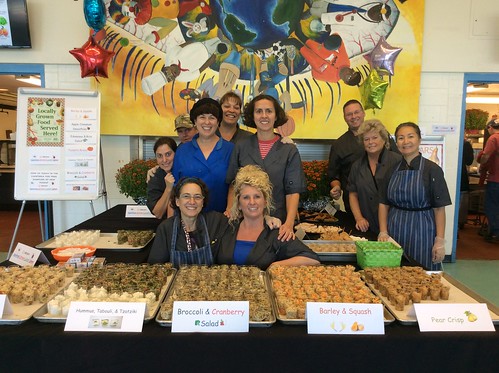
This guest blog showcases the success story of a school food service director in an upper-class suburb of Boston. The director discusses some of the creative methods her school meal program uses to boost participation and, thereby, promote health and nutrition in their district.
By Gail Koutroubas, School Food Service Director in Andover, MA
For 10 years, I’ve been a school food service director at Andover School District in Massachusetts. My district of 5,900 students lies in an upper-class suburb of Boston. The median income is approximately $140,000 with just 7 percent of students qualifying for free or reduced-priced lunch.
Some would think this is a good situation – students are generally well-nourished outside of school and can afford to purchase food while at school. But believe it or not, being a school food director in a more affluent area comes with its own set of challenges. Mainly, how do I get students who can afford to bring junk food from home to choose healthy, well-balanced meals offered through our school meals program?
When I started, school meal participation was at just 20 percent districtwide. We needed a way to increase participation while still meeting both the updated federal standards and Massachusetts’ strict state a la carte regulations. It was time to get creative. We made a number of changes that helped increase participation including bundling snacks to create reimbursable meals, working with local vendors, and implementing a breakfast program and an afterschool snack program. Today, participation is up to 52 percent!
We currently have relationships with six local vendors that serve foods the students already know and love. We work with these vendors to purchase healthy items that meet the nutrition standards. For example, we get whole grain bagels from Perfectos, a local bagel shop. We bundle it with a house-made smoothie made with low-fat/fat-free yogurt, carrot sticks, a piece of fresh fruit, and milk. This combination creates a reimbursable meal that we offer to high school and middle school students. This meal – loaded with protein, calcium, fresh fruits and vegetables – is one of our most popular, mainly because kids identify with the brand.
Back in the 1990s, schools brought in products from vendors like Pizza Hut or McDonald’s to boost participation. We’re using a similar technique to draw students to school meals, but only now, we’re supporting local vendors and serving students healthy options: It’s a WIN-WIN!
